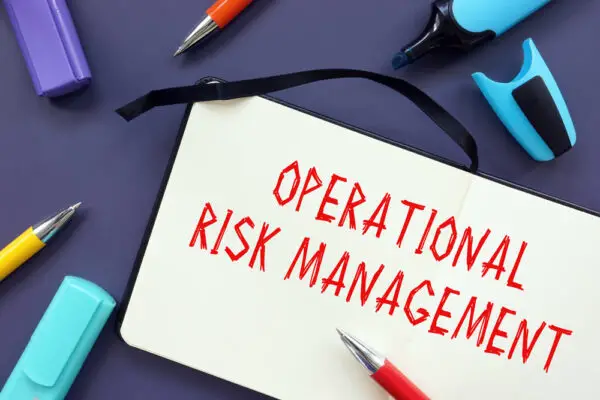The Business Continuity Plan (BCP) should be updated regularly to reflect changes in business operations, infrastructure, and regulatory requirements.
According to various sources, updating the BCP should occur at least annually, or whenever there is a trigger event, a risk assessment, a business review, or after the business goes through a material change TechTarget, DataGuard.
Business continuity plans should ideally be updated annually to stay relevant and effective. Trigger events like major changes or system failures can also prompt updates.
Such reviews are vital for ensuring the plan aligns with current risks, ultimately boosting stakeholder confidence. By aligning with business needs, the plan remains robust against potential disruptions.
Additional factors like stakeholder feedback, operational modifications, and environmental changes should prompt reviews.

Regular updates solidify the plan’s relevance and effectiveness. To discover more about maintaining an up-to-date business continuity plan, explore further insights on best practices for plan maintenance.
Key Takeaways
- Annual review maintains plan effectiveness.
- Trigger events prompt updates.
- Align with business environment changes.
- Incorporate stakeholder feedback.
- Ensure operational changes integration.
Recommended Frequency for BCP Updates
The recommended frequency for updating a Business Continuity Plan (BCP) is typically on an annual basis.
However, updates may also be prompted by specific trigger events such as significant operational changes, environmental shifts, stakeholder feedback, or risk assessment outcomes.
Ensuring that the BCP remains current and aligned with the organization’s goals and needs is vital for its effectiveness in safeguarding business operations.
Annual Review Cycle
Ensuring the ongoing effectiveness of the business continuity plan involves conducting annual reviews to incorporate changes in operations, technology, and external factors.
Updating the plan on an annual basis is essential to align it with current risks, recovery strategies, and the evolving business landscape.
These reviews enable adjustments based on feedback, lessons learned, and emerging insights, enhancing the plan’s relevance and reliability.
By integrating updates annually, organizations can maintain stakeholder confidence in their preparedness for potential disasters.
Regular annual reviews not only help in identifying gaps and areas for improvement but also demonstrate a proactive approach towards mitigating risks and ensuring business resilience.
The annual review cycle plays an important role in keeping business continuity plans robust and up to date.
Trigger Events for Updates
Regular updates to the business continuity plan are essential for maintaining its effectiveness in mitigating risks and ensuring business resilience.
Trigger events such as significant business changes, system outages, or personnel changes warrant updates to the plan.
Conducting business continuity plan testing, risk management, business impact analysis, and annual emergency reviews are critical areas that can prompt a review process.
Complex supply chain disruptions and changes in critical areas should also serve as high-level checks for updating the BCP.

Factors Influencing Update Frequency
The importance of updating a business continuity plan is influenced by various factors such as:
- Trigger events prompting changes.
- Shifts in the business environment.
- The significance of stakeholder feedback.
- The impact of operational modifications.
These elements play a vital role in determining how often the plan should be revised to guarantee its effectiveness in addressing potential disruptions and aligning with organizational objectives.
Trigger Events for Updates
An integral aspect of maintaining the effectiveness of the business continuity plan (BCP) is recognizing the trigger events that prompt updates to guarantee readiness and resilience in the face of potential disruptions.
Key factors influencing the need for BCP updates include major business changes, system failures, regulatory updates, significant incidents, new threats, vulnerabilities identified through risk assessments, feedback from stakeholders, audits, and external reviews.
To secure the BCP’s relevance, changes in technology, supply chain dependencies, and workforce structure often necessitate frequent updates.
By aligning with current business processes, industry standards, and regulatory requirements through these updates, organizations can better secure the continuity of their business operations.
| Factors Influencing BCP Updates | Examples |
|---|---|
| Major business changes | Mergers, acquisitions |
| System failures | IT infrastructure breakdown |
| Regulatory updates | Compliance requirements change |
Business Environment Changes
In response to evolving business landscapes, adjustments in the business environment prompt updates to the business continuity plan to guarantee alignment with current risks and operational requirements.
- Significant Changes: Business continuity plans should be updated when significant changes occur in the business environment.
- Trigger Factors: Factors like mergers, acquisitions, regulatory changes, and technological advancements may trigger updates.
- Influential Factors: Environmental factors, supply chain disruptions, and market shifts can influence the frequency of updates.
- Alignment with Needs: Updates should align the BCP with current risks, vulnerabilities, and operational needs.
Regular monitoring and assessment of external factors are pivotal in determining the necessity of plan updates to ensure the plan remains effective in safeguarding business operations.
Stakeholder Feedback Importance
Regularly seeking input from stakeholders is essential for updating the business continuity plan to maintain alignment with evolving requirements and expectations.
Stakeholder feedback plays a vital role in ensuring that the BCP remains relevant and effective in addressing their needs.
By analyzing this feedback, areas for improvement can be identified and the BCP updated accordingly, enhancing stakeholder buy-in and commitment to the plan.
Soliciting and acting on stakeholder feedback regularly is key to ensuring that the BCP evolves to meet current business and stakeholder demands.
In this way, incorporating stakeholder feedback into BCP updates is instrumental in continuously improving and enhancing the plan’s effectiveness in safeguarding business operations.
Operational Change Impact
Operational changes within an organization, such as the implementation of new technologies or shifts in personnel, can greatly influence the frequency at which updates to the business continuity plan are required.
To guarantee that your BCP remains effective in reducing risk and minimizing the impact of disruptions within your business, it is essential to review your BCP promptly when faced with operational changes.
Factors influencing update frequency include:
- The need to find gaps in the current BCP.
- Testing and exercising the BCP to assess its effectiveness.
- Adapting to changes in the business environment.
- Aligning with regulatory requirements and supply chain dependencies.
Regularly reviewing your BCP is vital for maintaining its relevance and enhancing organizational resilience.
Importance of Regular BCP Review
Regular reviews of the business continuity plan are essential to make sure that it remains aligned with current business needs and potential risks.
Updating the BCP allows for the integration of evolving threats, technological advancements, and changes in business processes.
It is important to incorporate annual updates to address lessons learned, changes in the business environment, and feedback from stakeholders, demonstrating a commitment to resilience and adaptability in the face of unforeseen events.
Frequency of BCP Updates
Incorporating regular updates into the business continuity plan (BCP) is vital for guaranteeing its continued effectiveness in mitigating risks and maintaining operational resilience.
Importance of Regular BCP Updates:
- Every Two Years Review: Conduct a thorough review and update of the BCP at least every two years to align with changes in the business environment.
- Crisis Management Integration: Regularly update the BCP to integrate new crisis management strategies and technologies for enhanced response capabilities.
- BCP Test Alignment: Ensure BC plans are updated after conducting BCP tests to address any identified gaps or weaknesses promptly.
- Continuity Maturity: Updating the BCP regularly contributes to the organization’s continuity maturity by keeping the plan relevant and effective.
Risk Assessment Alignment
To maintain the efficacy of a business continuity plan (BCP) in addressing current threats and vulnerabilities, regular updates are crucial for aligning risk assessments with evolving risks and prioritizing critical areas accordingly.
By updating the BCP, organizations can guarantee that their recovery strategies remain effective in mitigating potential disruptions.
Changes in the business landscape, such as technological advancements or environmental shifts, require continuous alignment of risk assessments within the BCP.
Regular reviews also help in identifying any gaps or weaknesses highlighted by the risk assessment process, enabling proactive measures to strengthen the BCP.
Allocating resources based on the latest risk assessment findings is dependent on the accuracy and timeliness of BCP updates, emphasizing the critical role of risk assessment alignment in maintaining business continuity.

Operational Changes Integration
Effective integration of operational changes into the business continuity plan is paramount for maintaining business resilience and continuity in the face of evolving processes and resources.
To guarantee seamless adaptation to operational shifts, the following steps are essential:
- Regularly review the BCP to align with updated operational procedures.
- Integrate changes in supply chains, technologies, or personnel promptly.
- Conduct recovery tests post-update to validate the plan’s efficacy.
- Engage business units in the review process to capture diverse perspectives and enhance overall readiness.
Key Components of BCP Update Schedule
When updating a business continuity plan (BCP), it is crucial to establish a clear schedule that includes an annual review as a foundational component.
This regular review guarantees that the BCP remains relevant and effective in addressing potential disruptions and risks.
Additionally, significant events, changes in the business environment, or immediate operational adjustments should serve as triggers for updating the plan promptly.
Annual Review Importance
An essential component of maintaining a robust business continuity plan (BCP) is the annual review process.
This process guarantees that the plan aligns with current business needs and remains resilient to potential disruptions.
- Guarantees alignment with current business needs.
- Incorporates changes in processes, technologies, and resources.
- Provides an opportunity to address gaps or weaknesses.
- Maintains relevance and stakeholder confidence.
Triggering Update Events
Key components of the BCP update schedule include identifying trigger events such as system outages, personnel changes, or technology upgrades that necessitate revisions to the plan.
When an event occurs that exposes gaps in continuity coverage or when new technology implementations occur, unscheduled reviews may be necessary.
Regular reviews, typically conducted annually, should also be supplemented by additional updates triggered by significant business changes to maintain the BCP’s alignment with current needs.
Updates to the business continuity plan should be based on review findings to uphold its effectiveness.
Additionally, stakeholder feedback and risk assessments play an important role in triggering updates to the BCP, ensuring that outdated information is replaced with relevant and reliable content to safeguard business operations.
Immediate Operational Changes
Incorporating immediate operational adjustments prompts an instant review of the business continuity plan to validate its alignment with current functions, resources, and dependencies.
- Assess Impact: Evaluate the implications of operational changes on the existing BCP.
- Update Critical Elements: Incorporate modifications to crucial functions, resources, and dependencies promptly.
- Adaptation to Disruptions: Quickly adjust the BCP in response to unforeseen events affecting business operations.
- Communication with Stakeholders: Regularly inform stakeholders about changes and updates to maintain alignment with the evolving business landscape.
Best Practices for BCP Maintenance
Maintaining a business continuity plan (BCP) involves adhering to best practices that guarantee its relevance and effectiveness. Regular updates are essential to reflect changes in business operations and address emerging risks promptly.
Trigger events such as significant organizational changes or feedback from stakeholders should prompt immediate reviews and updates to keep the BCP aligned with the organization’s objectives and operational needs.
Regular Updates Importance
Maintaining a business continuity plan that remains current and effective necessitates a commitment to regular updates that align with evolving operational needs and potential risks.
Regular updates to the BCP are vital for maintaining its relevance and reliability in safeguarding business operations. Here are some key reasons why regular updates are important:
- Alignment with Current Operations: Updating the BCP helps ensure it reflects the current state of the business.
- Incorporating Changes: It allows for the incorporation of changes in technology, personnel, processes, and external factors that may impact continuity.
- Enhanced Preparedness: Timely updates help in addressing gaps, enhancing preparedness, and improving response strategies.
- Relevance and Alignment: Consistent maintenance through regular updates ensures that the BCP remains relevant, robust, and aligned with the organization’s evolving needs.
Trigger Events for Updates
When considering the maintenance of a business continuity plan (BCP), key trigger events such as major business changes, regulatory updates, and significant incidents play an important role in prompting necessary updates.
These trigger events serve as vital indicators that signal the need for adjustments to the BCP to guarantee its relevance and effectiveness in safeguarding business operations.
Whether prompted by shifts in the business landscape, changes in regulations, or unexpected disruptions, updating the BCP in response to these triggers enhances the organization’s resilience and preparedness.
Frequently Asked Questions
Are Business Continuity Plans Reviewed Annually?
Business continuity plans are commonly reviewed annually to assess their effectiveness in mitigating risks and disruptions.
Regular reviews guarantee alignment with business needs and industry standards. Such evaluations help maintain readiness and adaptability to potential challenges.
When Should a Business Continuity or Disaster Plan Be Updated?
A business continuity plan (BCP) should be updated promptly following significant events, operational changes, or feedback from stakeholders to maintain its relevance and effectiveness in addressing potential disruptions.
Regular updates are crucial for aligning the BCP with organizational needs and objectives.
How Long Does a Business Continuity Plan Last?
A business continuity plan should be regularly updated to guarantee its relevance and effectiveness in mitigating risks and addressing disruptions.
Typically reviewed annually, updates can also be triggered by significant events, operational changes, stakeholder feedback, or risk assessments.
How Do I Update My Business Continuity Plan?
Regularly updating your business continuity plan is essential for its effectiveness. Review annually and after significant events.
Incorporate stakeholder feedback, lessons learned, and changes in the business environment. Timely adjustments guarantee alignment with organizational needs and safeguard operations.

Conclusion
The regular updating of a business continuity plan is crucial to guarantee its effectiveness in mitigating risks and maintaining operational resilience.
By following a structured update schedule, organizations can adapt to changing environments, emerging threats, and internal modifications, ultimately safeguarding business operations.
A proactive approach to BCP maintenance not only protects against disruptions but also instills a culture of preparedness and adaptability within the organization.

Chris Ekai is a Risk Management expert with over 10 years of experience in the field. He has a Master’s(MSc) degree in Risk Management from University of Portsmouth and is a CPA and Finance professional. He currently works as a Content Manager at Risk Publishing, writing about Enterprise Risk Management, Business Continuity Management and Project Management.


